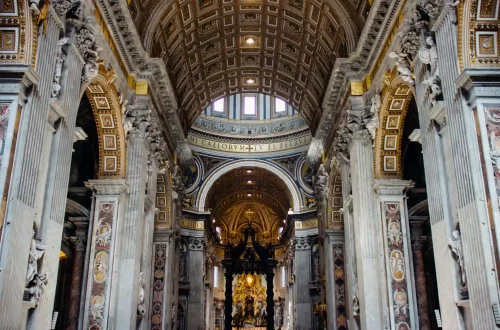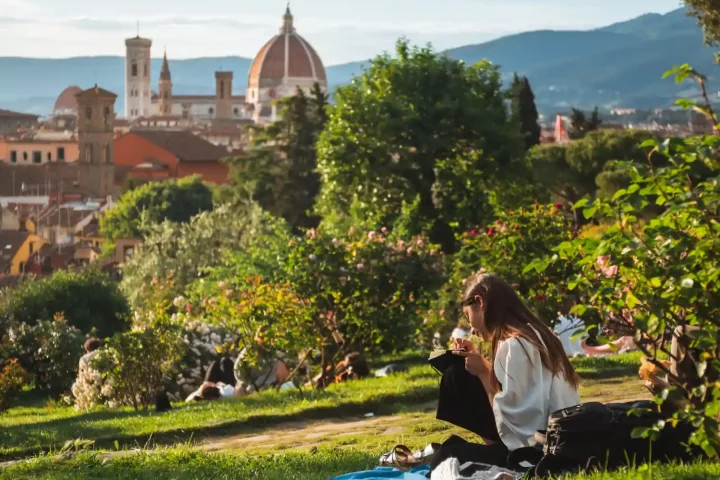Origins and historical evolution of the Italian language
The Italian language has undergone a long and intricate evolution, beginning with the fall of the Roman Empire in the 5th century. During the height of Roman rule, Latin was the lingua franca—the common language imposed across the vast territories of the Empire.
It served not only as a tool of administration and law but also as the medium for literature, philosophy, and religion.
However, after the Empire’s collapse, Latin began to fragment. The classical form used by scholars and clergy remained dominant in formal settings, especially throughout the Middle Ages, where it was the language of universities, religious institutions, and official documentation.
Meanwhile, the spoken language of the general population evolved into various vernaculars—local forms of Latin shaped by geography, culture, and contact with other languages.
These vernaculars played a crucial role in everyday life, becoming the foundation for what would eventually become the modern Romance languages, including Italian. The linguistic landscape of the Italian peninsula became highly regionalized, with distinct dialects emerging in places like Sicily, Tuscany, and Lombardy.
The first known written record in vernacular Italian dates back to 960 AD: the Placiti Cassinesi. These legal documents, originating near Capua in Campania, were written in the language spoken by ordinary people and marked a significant departure from Latin.
They demonstrated that vernacular Italian was not only spoken but also beginning to be used in formal contexts. By the 13th century, vernacular Italian had gained momentum in literature, especially poetry.
Sicilian poets were among the first to elevate the language in artistic expression, followed by Tuscan writers who would shape the future of Italian literature. This period laid the groundwork for the emergence of a more unified linguistic identity.
Take advantage of specialized assistance to secure your passport for a borderless future.
Dante Alighieri and the Birth of Literary Italian
No figure is more central to the development of literary Italian than Dante Alighieri. His masterpiece, The Divine Comedy, written in the early 14th century, was revolutionary not only for its content but for its language.
Dante chose to write in the Tuscan dialect rather than Latin, making his work accessible to a broader audience and setting a precedent for future writers.
Dante’s decision to use Tuscan was both practical and symbolic. Tuscany, particularly Florence, was a cultural and economic hub, and its dialect was considered elegant and expressive.
By elevating Tuscan to the level of literary language, Dante helped establish it as the foundation for what would become standard Italian.
His influence extended beyond literature. Dante’s work inspired contemporaries like Giovanni Boccaccio and Francesco Petrarch, who also wrote in Tuscan and contributed to its prestige.
Over time, Tuscan became the model for the Italian language taught in schools and used in official communication, especially after Italy’s unification in the 19th century.
Linguistic Features of Italian
Italian is renowned for its musicality and clarity, characteristics that stem from its phonetic structure. The language is largely phonemic, meaning that words are pronounced as they are written. This makes Italian relatively easy to read and pronounce for learners.
Key Linguistic Traits:
- Vowel Clarity: Italian vowels are pure and distinct, contributing to the language’s melodic sound.
- Consonant doubling: Geminate consonants (like the double “t” in notte) are pronounced with emphasis, affecting meaning and rhythm.
- Melodic intonation: Italian speech patterns often rise and fall in a way that resembles singing, enhancing its aesthetic appeal.
Grammatically, Italian features gendered nouns, complex verb conjugations, and a flexible syntax that allows for expressive variation.
While formal Italian is used in education and media, regional dialects continue to influence everyday speech, adding richness and diversity to the language.
Take advantage of specialized assistance to secure your passport for a borderless future.
Dialects and the standardization of Italian
Italy’s linguistic diversity is one of its most fascinating aspects. The country is home to dozens of dialects, many of which are so distinct they are considered separate languages by linguists.
These include:
- Sicilian: Influenced by Greek, Arabic, and Spanish due to centuries of foreign rule.
- Neapolitan: Spoken in Campania and surrounding regions, with its own literary tradition.
- Venetian: Once the language of a powerful maritime republic.
- Lombard: A minority language spoken in northern Italy, influenced by Germanic roots.
Despite this diversity, the standardization of Italian has been largely successful. The Tuscan-based standard is taught in schools, used in media, and promoted by government institutions.
Television, radio, and national education policies have played a key role in unifying the language, though dialects remain vibrant in local contexts.
Today, many Italians are bilingual in standard Italian and their regional dialect, switching fluidly between the two depending on context. This coexistence reflects Italy’s respect for both national unity and regional identity.
Current status and global importance
Italian is the official language of Italy, but its reach extends beyond national borders. It is also an official language in Switzerland (particularly in the canton of Ticino), San Marino, and Vatican City.
In these regions, Italian serves not only as a means of communication but also as a vehicle for cultural and religious expression.
Key Statistics:
- Native Speakers: Approximately 63 million people speak Italian as their first language.
- Second-Language Speakers: An estimated 3 million people speak Italian as a second language.
- Global Learners: Italian ranks among the top ten most studied languages globally, especially in countries with large Italian diaspora communities like the United States, Argentina, and Brazil.
Italian’s global influence is amplified by its cultural exports—from cuisine and design to cinema and literature. It continues to be a language of beauty, tradition, and innovation.
Take advantage of specialized assistance to secure your passport for a borderless future.
A living legacy
The Italian language is more than a means of communication—it’s a living legacy of history, art, and identity. From its roots in Vulgar Latin to its literary flowering under Dante, and its modern role in global culture, Italian has evolved while maintaining its distinctive charm.
Whether spoken in the streets of Florence or studied in classrooms around the world, Italian remains a testament to the enduring power of language to connect, inspire, and preserve heritage.






